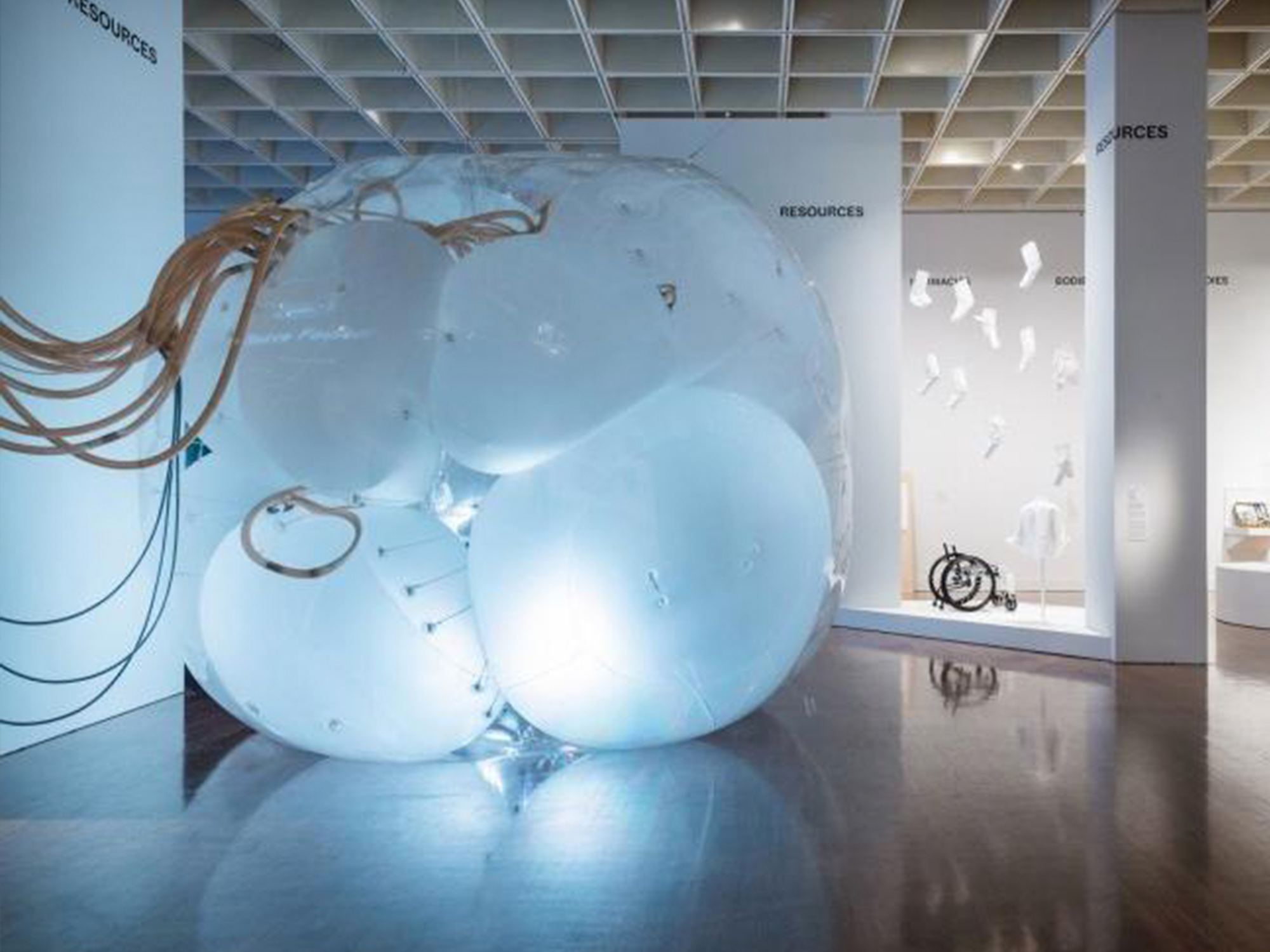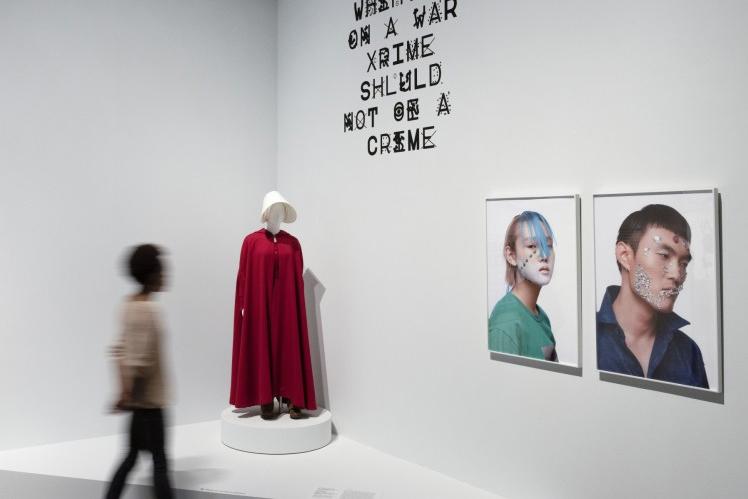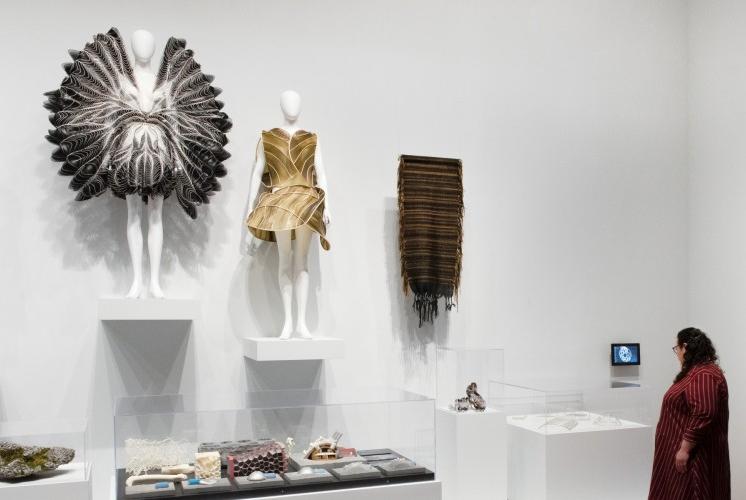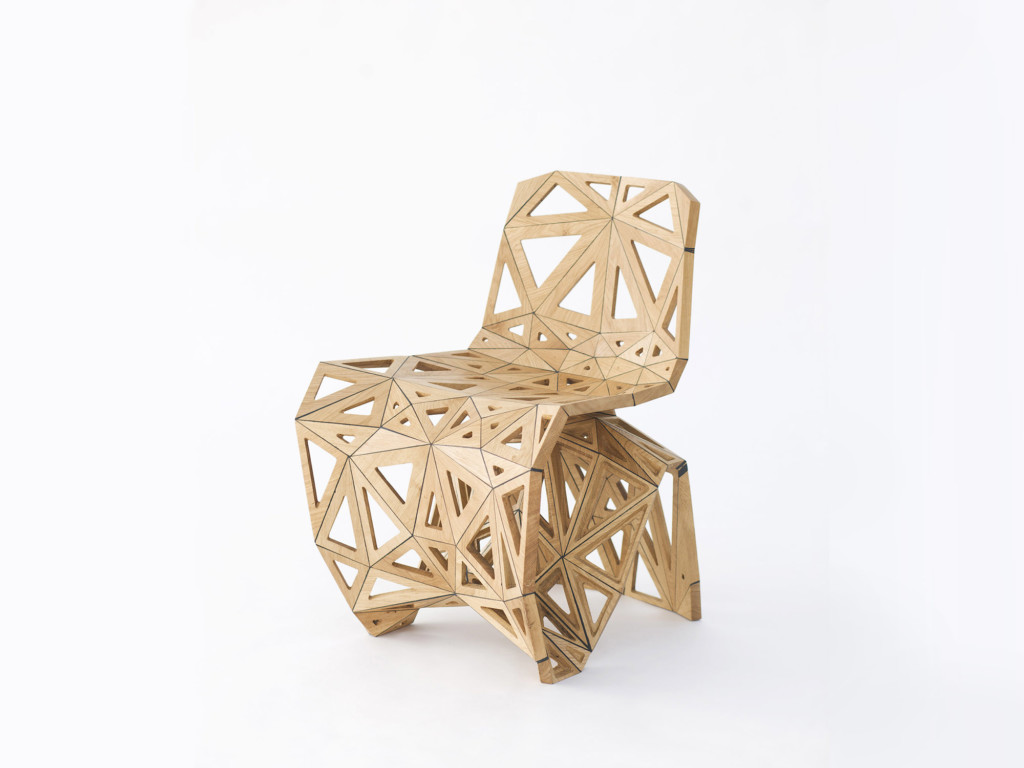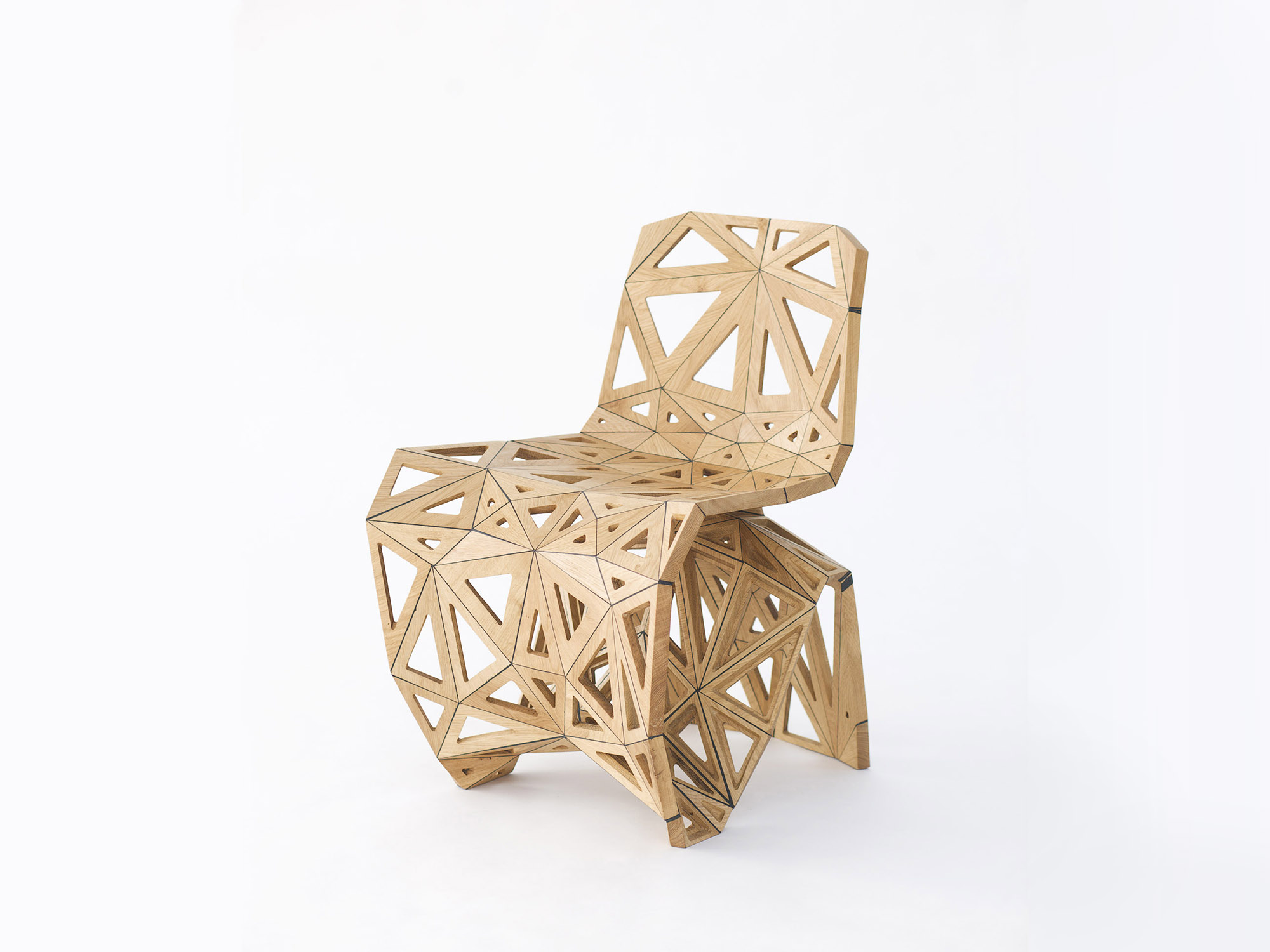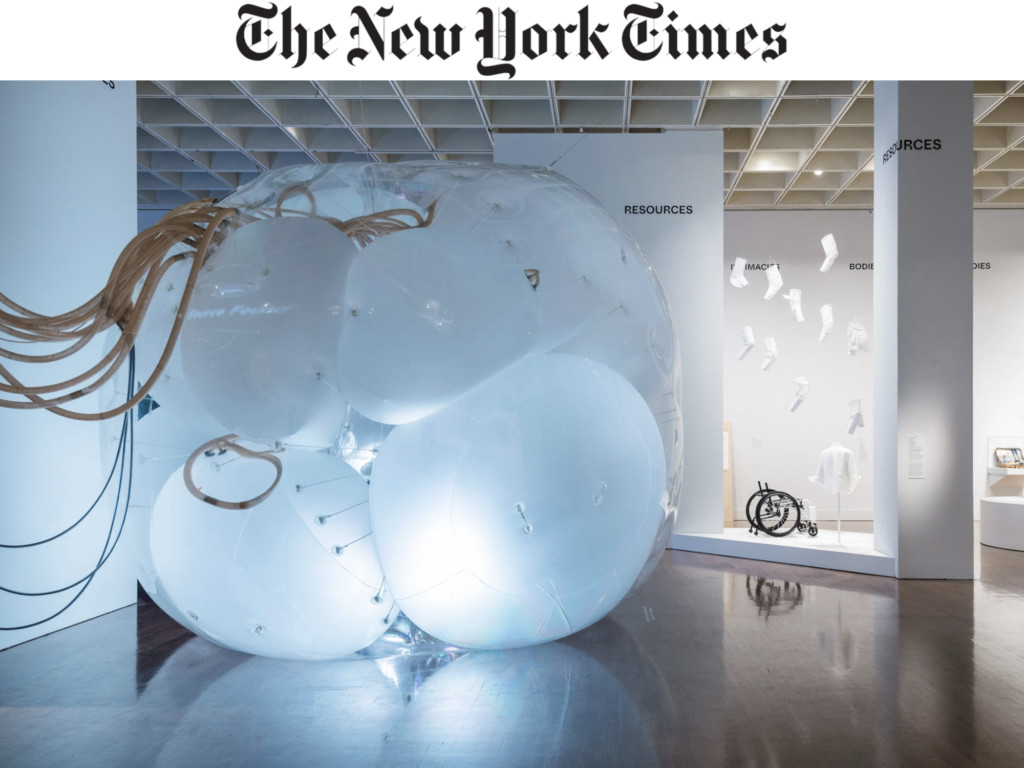The role of designers in shaping how we think about the future is the subject of a major exhibition that will premiere at the Philadelphia Museum of Art this fall. Designs for Different Futures brings together some 80 works that address the challenges and opportunities that humans may encounter in the years, decades, and centuries ahead. Organized by the Philadelphia Museum of Art, the Walker Art Center, Minneapolis, and the Art Institute of Chicago, Designs for Different Futures will be presented at the Walker and the Art Institute of Chicago following its presentation in Philadelphia.
Among the questions today’s designers seek to answer are: What role can technology play in augmenting or replacing a broad range of human activities? Can intimacy be maintained at a distance? How can we negotiate privacy in a world in which the sharing and use of personal information has blurred traditional boundaries? How might we use design to help heal or transform ourselves, bodily and psychologically? How will we feed an ever-growing population?
While no one can precisely predict the shape of things to come, the works in the exhibition are firmly fixed on the future, providing design solutions for a number of speculative scenarios. In some instances, these proposals are borne of a sense of anxiety, and in others of a sense of excitement over the possibilities that can be created through the use of innovative materials, new technologies, and, most importantly, fresh ideas.
Timothy Rub, the George D. Widener Director and Chief Executive Officer of the Philadelphia Museum of Art, stated: “We often think of art museums as places that foster a dialogue between the past and the present, but they also can and should be places that inspire us to think about the future and to ask how artists and designers can help us think creatively about it. We are delighted to be able to collaborate with the Walker Art Center and the Art Institute of Chicago on this engaging project, which will offer our visitors an opportunity to understand not only how designers are imagining—and responding to—different visions of the futures, but also to understand just how profoundly forward-looking design contributes in our own time to shaping the world that we occupy and will bequeath as a legacy to future generations.”
Thinking about the future has always been part of the human condition. It has also been a perennial field of inquiry for designers and architects whose speculations on this subject—ranging from the concrete to the whimsical—can profoundly affect how we imagine what is to come. Among the many forward-looking projects on view, visitors to Designs for Different Futures will encounter lab-grown food, robotic companions, family leave policy proposals, and textiles made of seaweed.
“Some of these possibilities will come to fruition, while others will remain dreams or even threats,” said Kathryn Hiesinger, the J. Mahlon Buck, Jr. Family Senior Curator of European Decorative Arts after 1700, who coordinated the exhibition in Philadelphia with former assistant curator Michelle Millar Fisher. “We’d like visitors to join us as we present designs that consider the possible, debate the inevitable, and weigh the alternatives. This exhibition explores how design—understood expansively—can help us all grapple with what might be on the horizon and allows our imaginations to take flight.
The exhibition is divided into 11 thematic sections. In Resources, visitors will encounter an inflatable pod measuring 15 feet in diameter, part of the work Another Generosity first created in 2018 by Finnish architect Eero Lundén and designed in this incarnation in collaboration with Ron Aasholm and Carmen Lee. The pod slowly expands and contracts in the space, responding to changing levels of carbon dioxide as visitors exhale around it, and provoking questions about the ongoing effect of the human footprint on the environment. The section titled Generations will explore ways in which the choices we make today may contribute to the well-being or suffering of those who come after us. Here, visitors will find a model of the Svalbard Global Seed Vault, a repository that stores the world’s largest collection of crop seeds. Located within a mountain on a remote island near the Arctic Circle, the facility is designed to withstand natural or human-made disasters. The Earths section of the exhibition speculates on the challenges of extra-terrestrial communication in Lisa Moura’s Alien Nations installation and showcases typeface from the 2016 science-fiction film Arrival.
In Bodies, designers grapple with choices about how our physical and psychological selves might look, feel, and function in different future scenarios. Featured here is one of the world’s lightest and most advanced exoskeletons, designed to help people with mobility challenges remain upright and active. Also notable is the CRISPR Kit, an affordable and accessible gene-editing toolbox, which has the potential to revolutionize biomedical research and open opportunities for gene therapy and genetic engineering.
Intimacies is a section that explores how technologies and online interfaces may affect love, family, and community. Here, urban experiences of sex and love are the focus of Andrés Jaque’s Intimate Strangers, an audio-visual installation focusing on the gay dating app. Through internet-enabled devices, designers explore the possibility of digitally mediated love and sex, suggesting what advanced digital networks hold for human sexuality.
Foods contains projects that explore the future of the human diet. Among them is a modular edible-insect farm, Cricket Shelter, by Terreform ONE, which offers a ready source of protein for impending food crises. A kitchen installation suggests how technology and design may contribute to new modes of food production, including an Ouroboros Steak made from human cells.
Additional sections of the exhibition will focus on the future of Jobs and how Cities will function and look 100 years from now—with robotic baby feeders, driverless cars, and other developments—affording a glimpse at how we might navigate living beyond this planet. Shoes grown from sweat are among the innovations visitors will find in a section devoted to Materials, while Power will look at how design may affect our citizenship and help us retain agency over such essentials as our DNA, our voices, and our electronic communications in a future where the lines between record-keeping, communication, and surveillance blur. Data acknowledges and questions the different ways that information might be collected and used, with all its inherent biases and asymmetries, to shape different futures.
FUTURES THERAPY LAB
As part of the exhibition, visitors to the Philadelphia Museum of Art galleries will also encounter a space for community meetups, public programs, school visits, and self-directed activities. The Futures Therapy Lab will weave personal connections between visitors and the exhibition as part of a collaboration between the museum’s Education Department and the curatorial team. Weekly programs, many of which will occur on Pay-What-You-Wish Wednesday Nights, will connect visitors with designers, artists, and locally based creatives. The Futures Therapy Lab will contain a crowdsourced Futures Library that includes everything from science-fiction books to the exhibition catalogue. “Thinking about possible futures is both exhilarating and anxiety-provoking,” said Emily Schreiner, the Zoë and Dean Pappas Curator of Education, Public Programs. “The Futures Therapy Lab is a place for conversation, critique, and creativity in which visitors can imagine their own hopes, fears and solutions for the future through reflection, discussion, and art making.”
